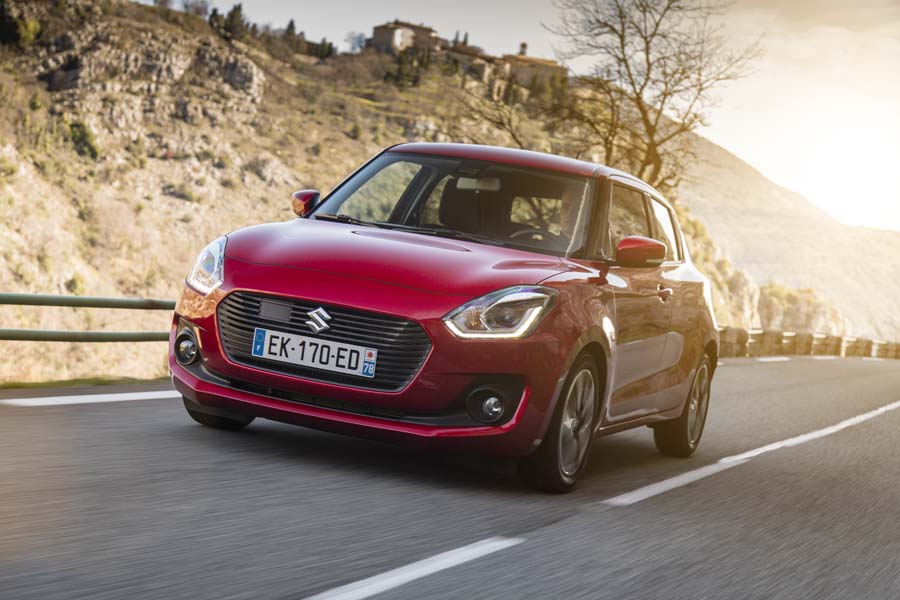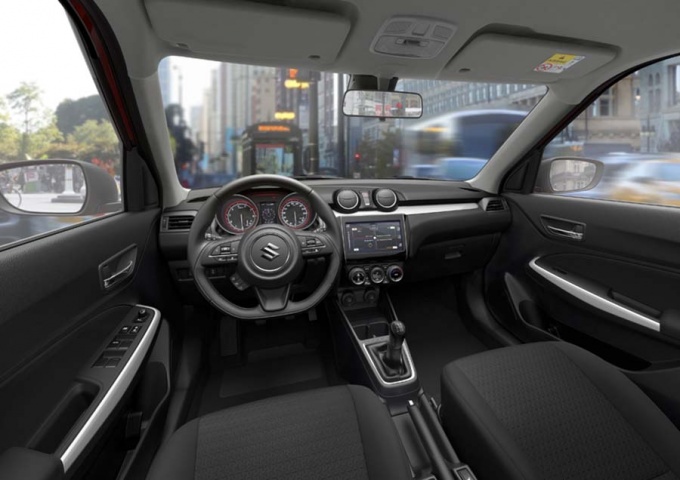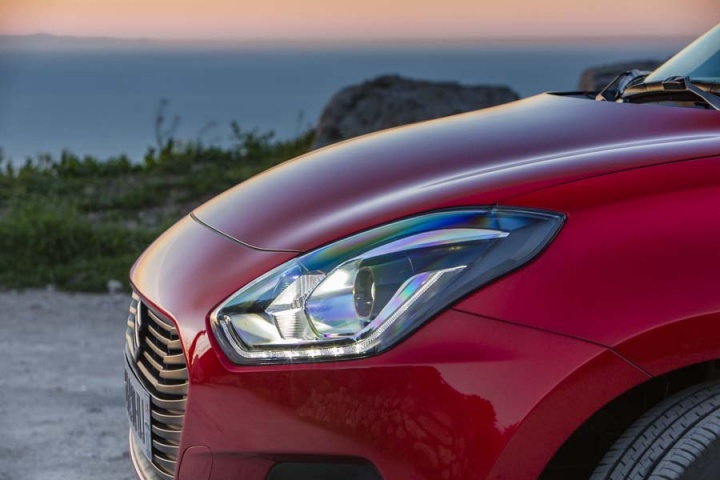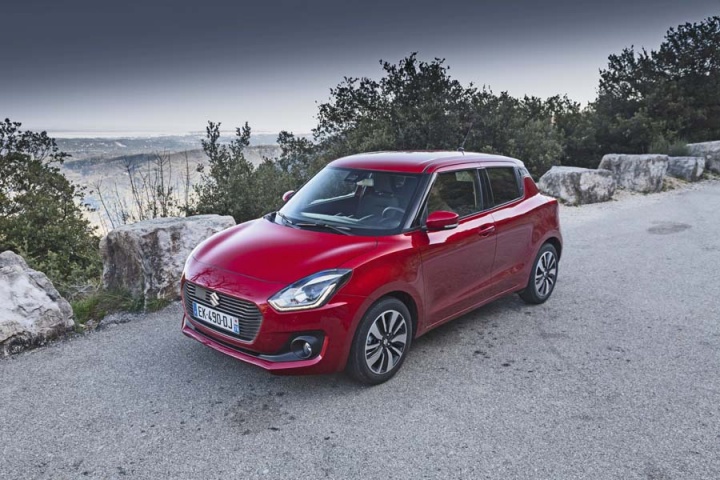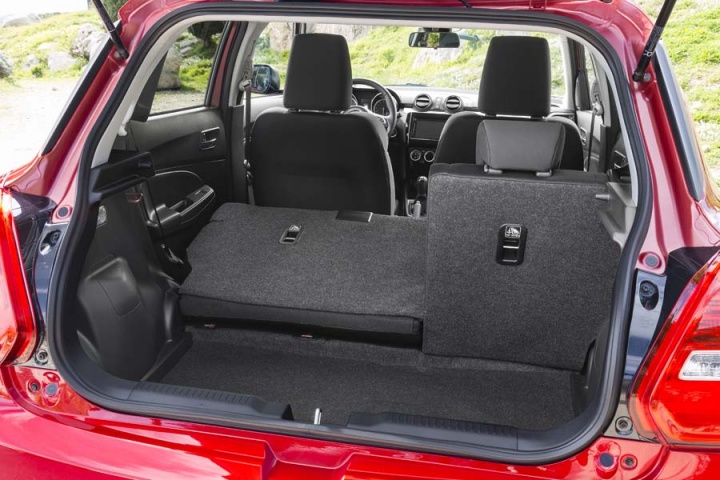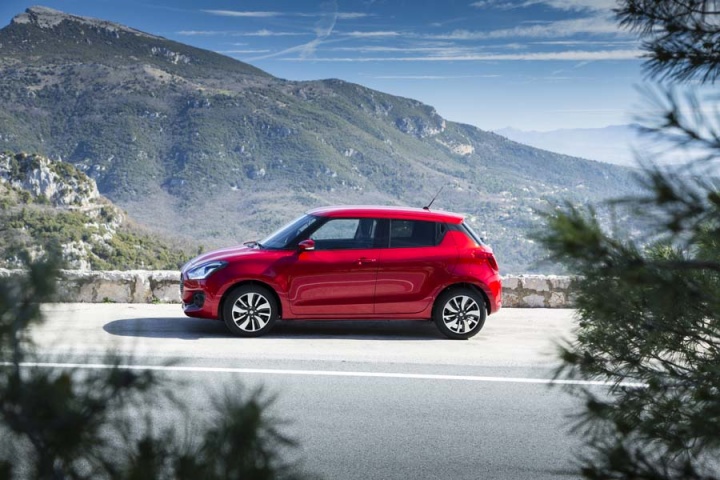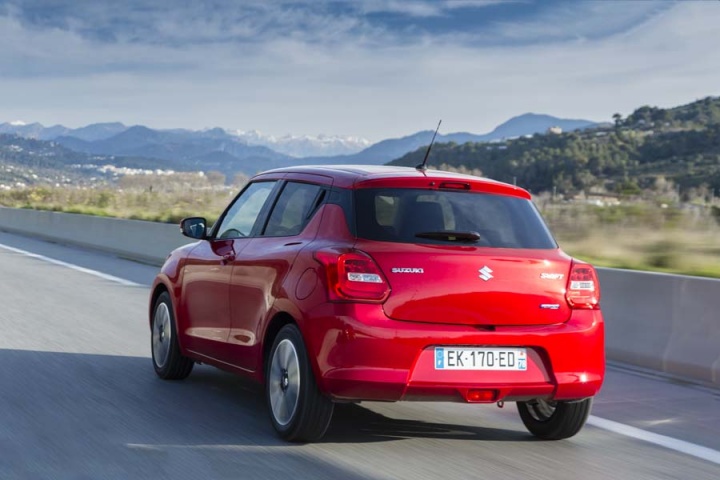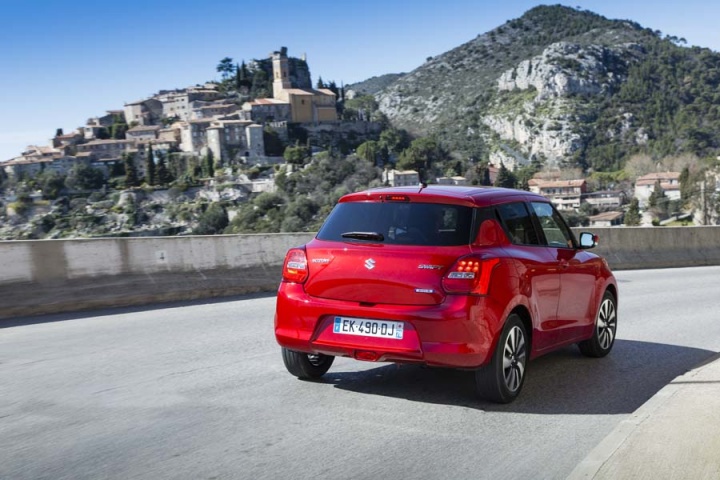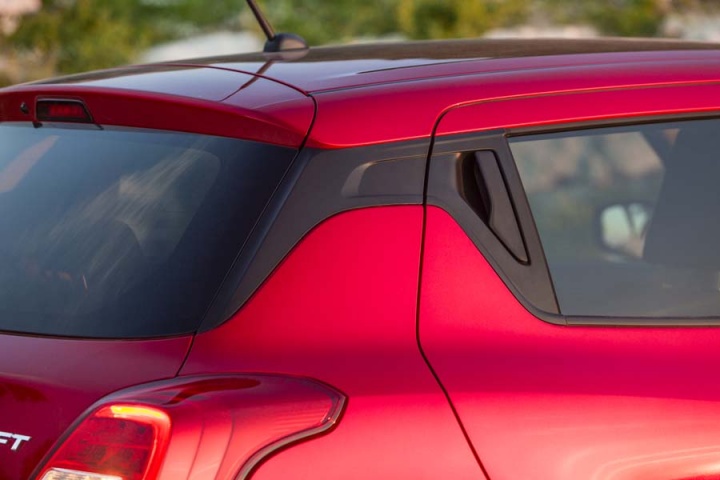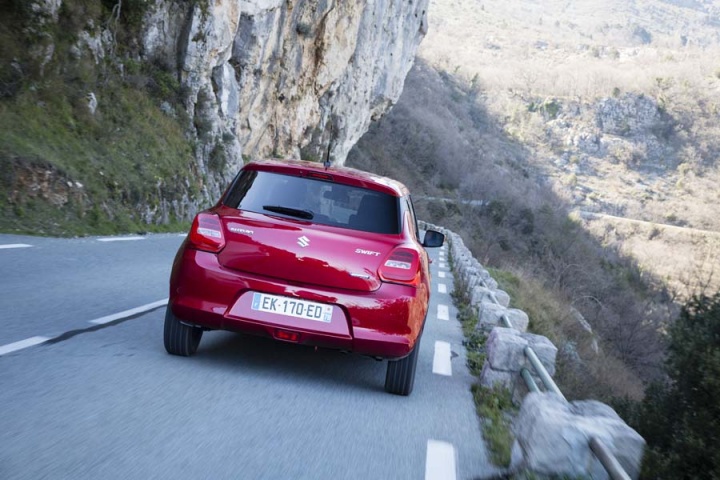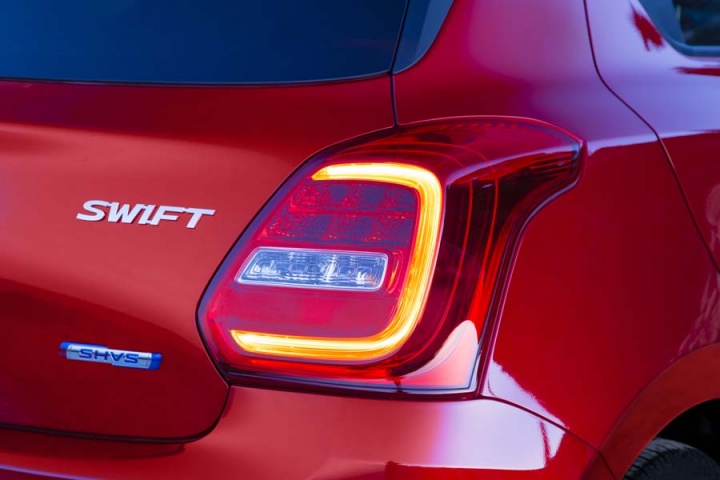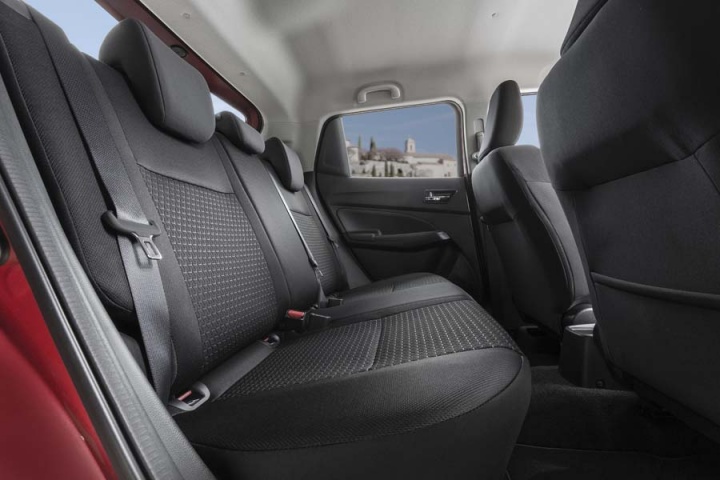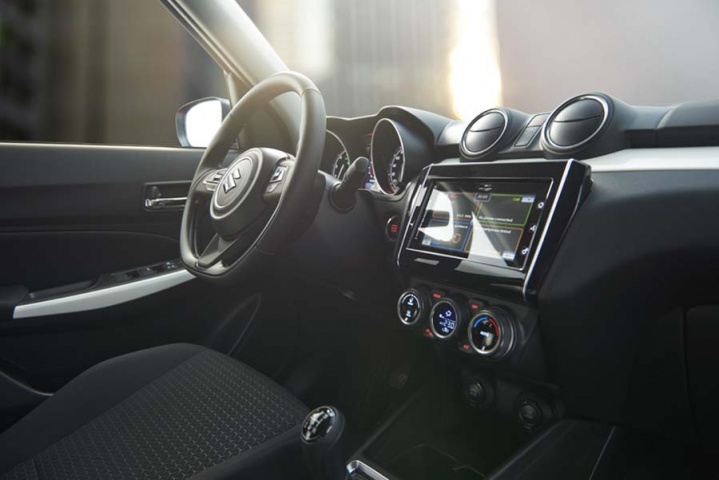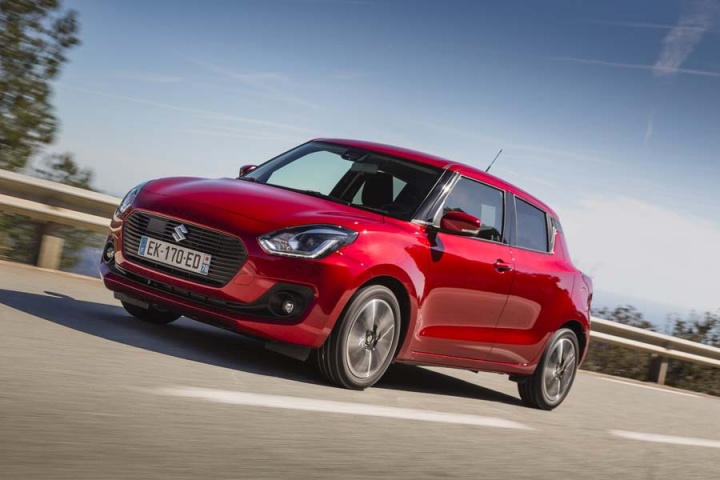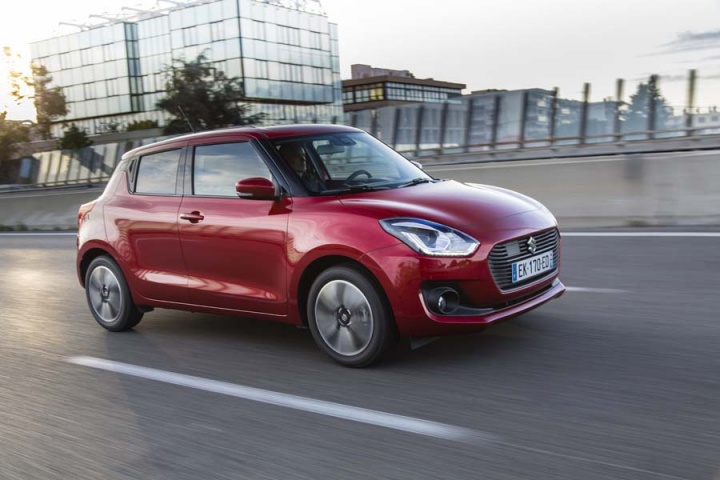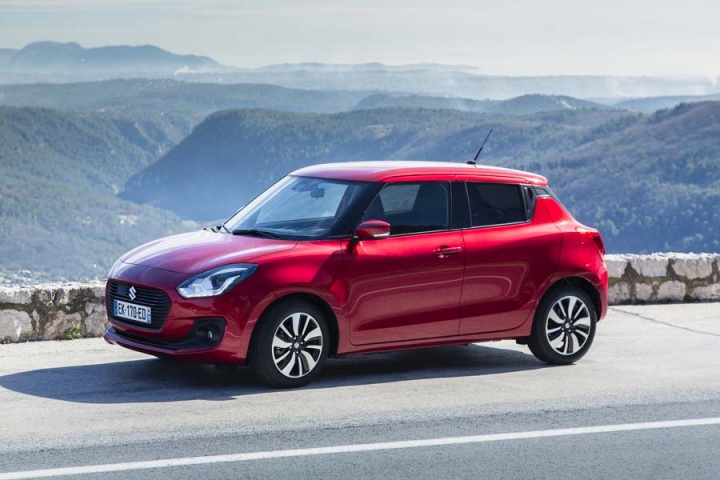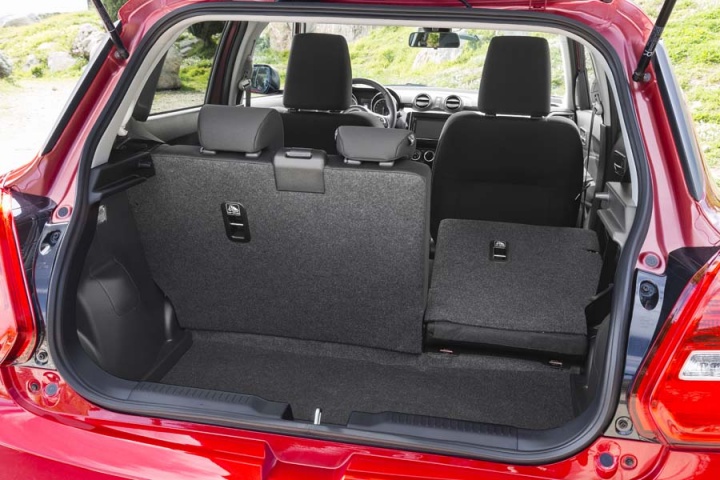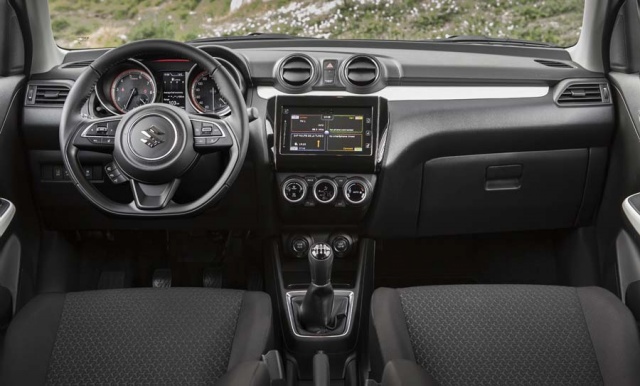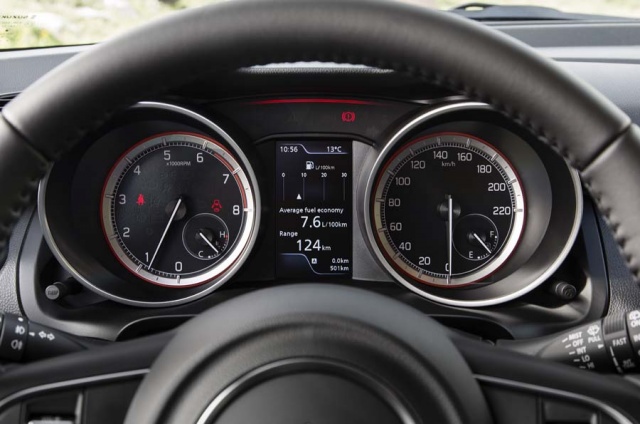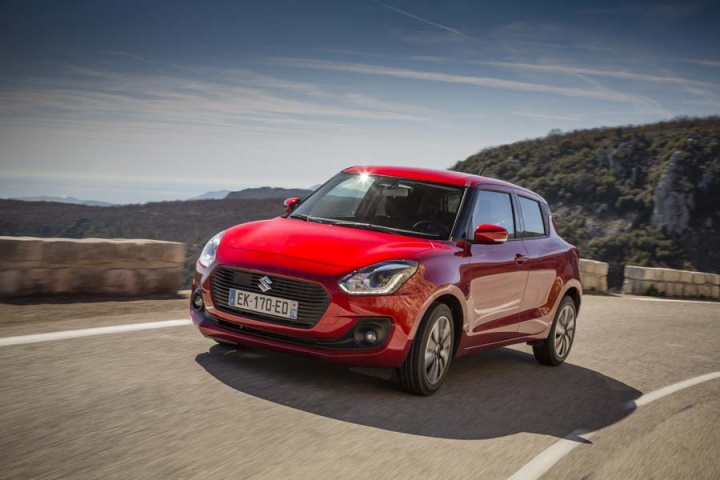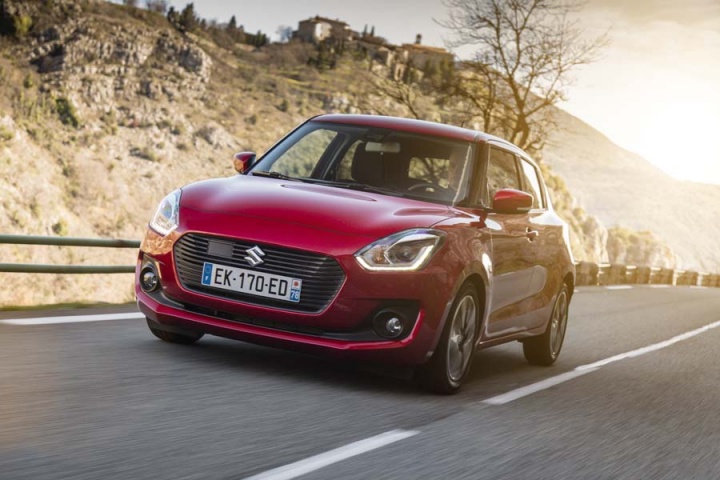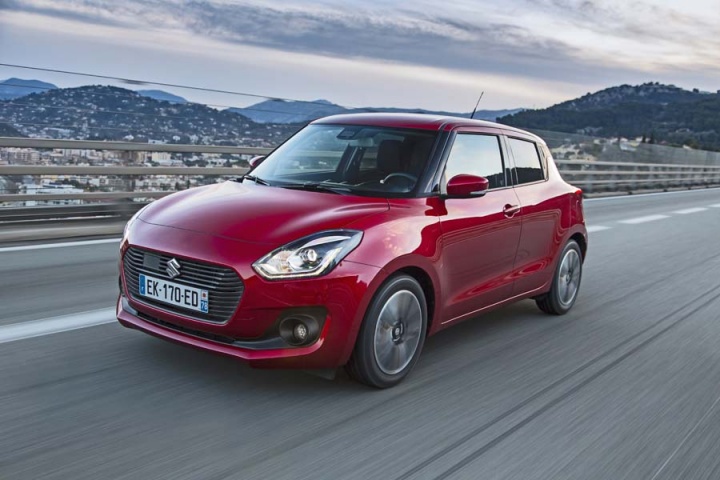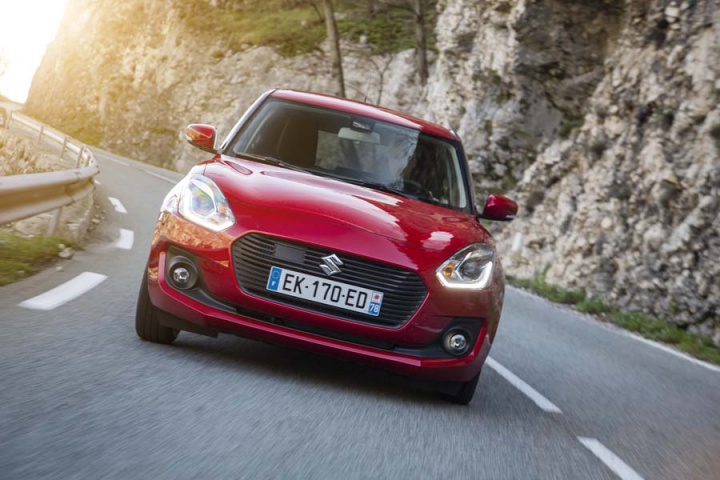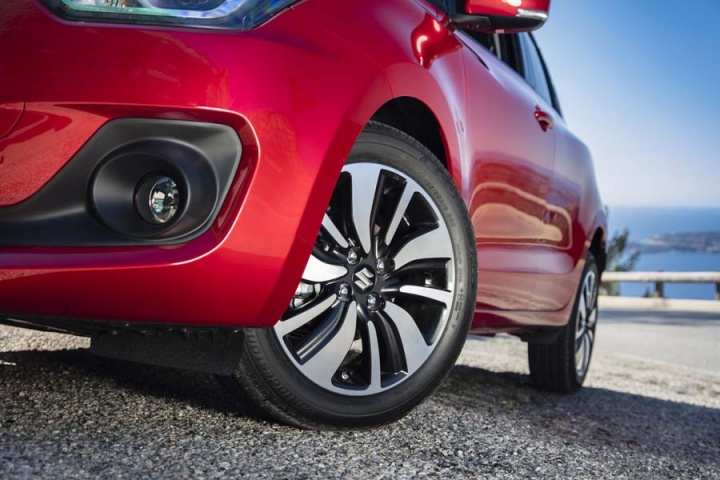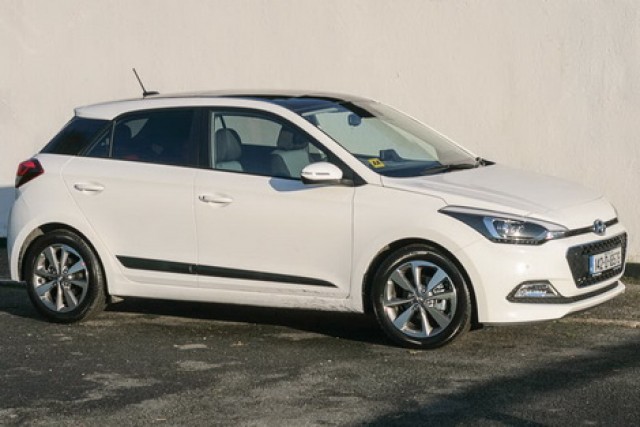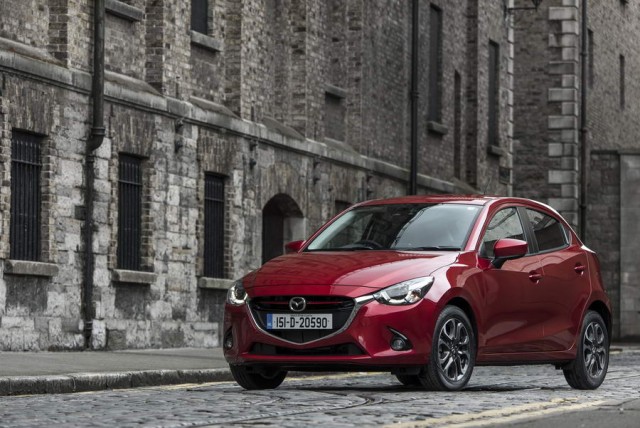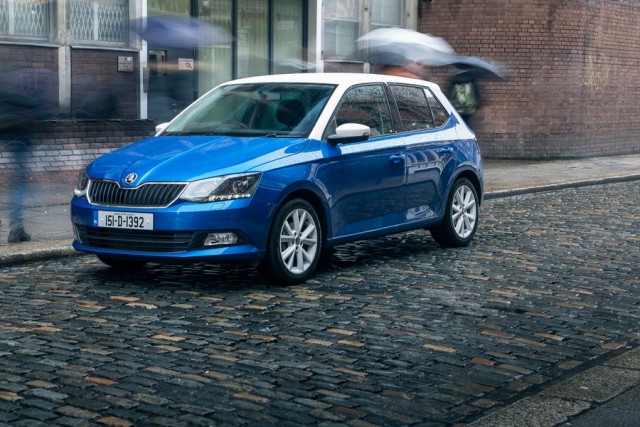Suzuki begins with the 'Heartect' platform from the Baleno and Ignis models, and plonks the bodywork for the fourth-generation Suzuki Swift on top. There's plenty to talk about in terms of its styling, drivetrains and interior, but the big news is that the car is up to 120kg lighter than its predecessor and none of the launch cars weighs more than a tonne. That leads to a supermini that, while not class-leading, is certainly challenging at a much higher level in the class than before, thanks to its perky driving dynamics.
In the metal
The new Suzuki Swift looks a lot like the old one, only slightly more smoothed-off and trying so, so hard to be super-adorable. Look, it even has a smiley mouth in the front airdam! OK, so we're hyping up its cute-factor, but there have already been plenty of people who say they don't like the look of the new Swift. We don't subscribe to that viewpoint, however, as it's a fairly neat car in appearance and it wears some traditional Swift signifiers, like the defined C-pillar (now toting a 'floating roof' effect separator), the wraparound glasshouse, the sloped roof and the familiar light clusters. The hexagonal grille is new and 'hidden' rear door handles are employed because there won't be any right-hand-drive three-door models over here, as not enough people buy them. So the five-door is made to look like a three-door instead.
What might not be obvious is that the Swift is ever so slightly smaller in a few dimensions - it's 10mm shorter and 15mm lower - but it is also 40mm wider than the Japanese-market cars (yes, they're doing two body widths for one supermini) and the wheelbase is stretched by 20mm. This benefits interior room, as space in the back is more than acceptable for a car of this class, while the Suzuki's boot has grown 54 litres to a commendable 265-litre capacity with all seats in place. It's a pity the cabin lacks the vivacious nature of the Ignis' interior, instead going for a sober look akin to the Baleno's dashboard, and some of the plastics leave a bit to be desired, but everything is intuitively laid-out and clearly labelled up, so the Swift's passenger compartment gets an overall thumbs-up from us.
Despite being roughly the same shape as the old car, it's a good deal lighter than its predecessor; up to 120kg, in some instances, and considering the Swift was hardly heavy before, this is a percentage weight decrease of a mighty order. On a family hatch, trimming out 120kg would be something to be proud of, but junking that much bulk from an already-diddy supermini? It's tantamount to witchcraft.
Driving it
Familiar Suzuki powerplants are utilised in the Swift, with the 1.2-litre Dualjet four-cylinder normally aspirated petrol unit kicking things off with 90hp/120Nm, while the turbocharged 1.0-litre Boosterjet three-cylinder motor is the launch range-topper; it delivers 111hp and 170Nm with a manual gearbox, or 160Nm if you opt for the six-speed automatic. This self-shifter is only available on this regular 1.0-litre model, while all other cars use the five-speed manual gearbox.
However, both engines can be paired to the Smart Hybrid Vehicle by Suzuki (SHVS) mild hybrid system. This includes a 2.3kW Integrated Starter Generator and a 12-volt lithium-ion battery under the passenger seat, this little set-up adding 50Nm and a mere 6.2kg to either version of the Swift. Suzuki doesn't claim any improvements to the performance data or peak outputs for the cars fitted with SHVS, although the hybrid 1.0-litre car has slightly lower emissions and slightly better economy, while brake energy harvesting is used to charge the additional battery. The 1.2 SHVS would have better eco-stats, if it weren't for the fact that it also gets heavy Allgrip four-wheel drive as standard, which rather negates the point of having the SHVS in the first place.
What's not explicitly stated is that, while peak torque of either the 1.0 or 1.2 might remain the same on paper, the SHVS can employ a sort of 'torque-fill' technique at lower revs, making it easier for the combustion engine to build speed - this is another way the Swift saves on fuel.
So, we drove just one model at the launch, a 1.0-litre SHVS in high specification. This weighs in at 925kg, leading to a claimed ability to hit three-figure speeds from rest in 10.6 seconds. And this seems an eminently believable claim, because this featherweight supermini is a proper little terrier. It piles on revs smoothly and keenly, the gargling three-cylinder engine overlaying the proceedings with an amusing soundtrack. It actually feels even quicker than the numbers suggest, which already has us eagerly looking forward to the confirmed Sport model that's on the way for 2018. Expect that to use the 140hp/220Nm 1.4-litre Boosterjet engine from the Vitara S; also expect it to be considerably quicker than the old Sport, which had a 1.6-litre, non-forced induction engine.
Luckily, straight-line pace isn't the Swift's only trick, as its lack of mass means it loves to be thrown into a series of bends. True, the steering could do with more feel and the brakes are obviously two-stage regen affairs, as they feel mushy at the top of the middle pedal's travel, but the body control and front-end bite are superb, while the feeling of general lightness pervades the Suzuki's handling, making it feel marvellous. It's also perfectly fine as a sedate daily driver, which - let's face it - is what most owners will subject their Swifts to, with a comfortable ride and decent suppression of external noise contributors. So yes, it will pootle to the shops like any Suzuki Swift that has gone before ever has, but it's nice to know that underneath all this sensibleness is a cheeky chassis of true talent.
What you get for your money
Exact pricing is yet to be confirmed and it's likely to be late April, early May before we know the final figures. However, Suzuki is pitching the Swift midway between the Ignis and the Baleno, which - rather neatly - are €5,000 apart in the price lists. So expect the Swift to start from around €15,500. Trim levels should follow the familiar SZ3, SZ-T and SZ5 levels, as seen both here and in other markets, with all cars getting at least DAB, Bluetooth and air conditioning, and the top cars featuring luxuries like climate control, adaptive cruise control and satnav, among more. Essentially, the Swift will be fully stocked and yet cheaper than some key rivals too.
Summary
One of the sharper-driving superminis in class, the Suzuki Swift no longer feels like an oddball curio, something you'd look at if you'd exhausted five or six much more reasonable alternatives already and you were simply looking for something a bit different from the norm. This Japanese tyke still has a cabin that lags behind prevailing class standards and it's not as comfy to travel in as something like a Volkswagen Polo, for instance, but it pays you off instead with loads of space, loads of equipment and loads of driving fun. Think of it as an Asian rival for the Ford Fiesta and the appealing Suzuki Swift makes a great deal of sense in the B-segment.

